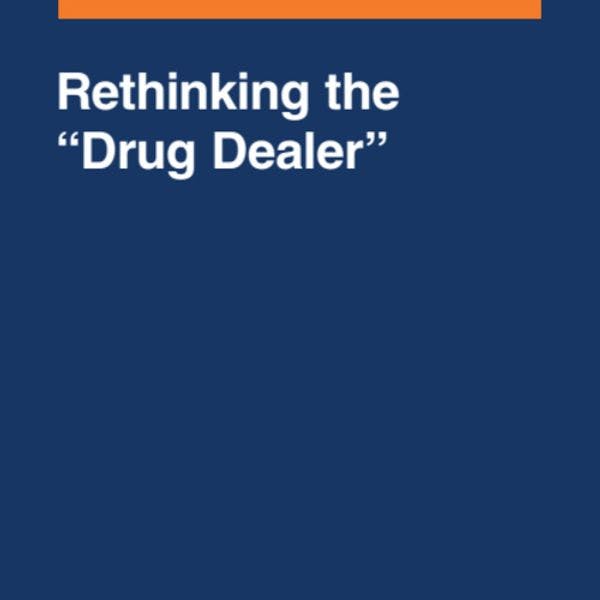Repensar el “narcotraficante”
DPA explica cómo los recursos dedicados a respuestas punitivas que ponen a los traficantes en la mirilla acrecientan, en vez de resolver, los retos relacionados a las drogas. Más información, en inglés, está disponible abajo.
Policymakers in the United States increasingly recognize that drug use should be treated as a public health issue instead of a criminal issue. Most, however, continue to support harsh criminal sentences for people who are involved with drug selling or distribution. Many imagine these people are “predators” or “pushers” who force drugs on the vulnerable, contributing to addiction, overdose and violent crime.
With more than 68,000 people in the U.S. dying from accidental drug overdose in 2018 alone, many people are searching for someone to blame. Pointing the finger at people who sell drugs is, in some ways, a natural emotional response to loss of this magnitude. It is also consistent with decades of drug policies based on the assumption that people who sell or distribute drugs are responsible for causing drug use.
Politicians of all stripes have argued that long sentences for drug sellers will reduce drug availability and make remaining drugs more expensive, driving down demand. But this is not how drug markets actually work.
Imprisoning people who sell drugs does not reduce the drug supply, increase drug prices, or prevent drug use. As Mark Kleiman, a highly-regarded drug policy expert, has explained, “We did the experiment. In 1980, we had about 15,000 people behind bars for drug dealing. And now we have about 450,000 people behind bars for drug dealing. And the prices of all major drugs are down dramatically. So if the question is do longer sentences lead to higher drug prices and therefore less drug consumption, the answer is no.” When a person who sells drugs is imprisoned, they are inevitably replaced by a new recruit or by remaining sellers, as long as demand remains unaffected. A Maryland police officer once described arresting drug sellers as “playing whack-a-mole” and “banging your head against a wall,” because they can be so efficiently replaced.
Framing people who sell drugs as perpetrators and people who use drugs as victims is also misguided because there is extensive overlap between these two groups. A 2012 survey found that 43% of people who reported selling drugs in the past year also reported that they met the criteria for a substance use disorder. In addition, laws against drug selling are so broadly written that it is easy for people caught with drugs for personal use to get charged as dealers, even if they were not involved in selling at all. Politicians and prosecutors who say they want a public health approach to drug use, but harsh criminal penalties for anyone who sells, are in many cases calling for the imprisonment and non-imprisonment of the very same people.
Beyond being merely ineffective, the harsh criminalization of supply-side drug market activity may actually make drug use more dangerous, increasing overdose deaths and leading to more violence in communities. Law enforcement crackdowns on drug trafficking may incentivize the introduction of more potent, riskier drugs such as fentanyl – a synthetic opioid 30 to 50 times as potent as heroin– into the drug supply. Aggressive prosecution of people who sell drugs may undermine 911 Good Samaritan laws, making it less likely that people will call 911 at the scene of an overdose. Indiscriminately putting people who sell drugs in prison also means removing trusted sellers from communities, forcing users to buy from people they don’t know and making an already unregulated and unpredictable drug supply even less predictable.
The relationship between drug markets and violence is complicated. In some contexts, drug prohibition has fueled organized crime and been associated with horrific violence and corruption. But drug markets are much more diverse than stereotypes suggest: many of them experience little or no serious violence, while many markets that sometimes do experience violence operate relatively nonviolently most of the time. Law enforcement crackdowns may actually increase violence in these markets by disrupting the interpersonal relationships and territorial agreements that keep some drug markets operating smoothly.
While different individuals who work on the supply side of the drug economy have differing goals, priorities and knowledge levels about drug safety and harm reduction, there is evidence that some people who sell drugs take steps to ensure that their clients stay as safe as possible. Some people who use drugs report high levels of trust in the people from whom they buy, although in an unregulated drug market even the most ethical drug sellers have limited ability to know the composition of the product they are selling.
The current system of supply-side criminalization disproportionately impacts people at the lowest levels of drug supplying hierarchies. Available data suggest that the vast majority of people in prison for drug selling or distribution are not high-level suppliers or “kingpins” and have no history of violent conduct. The current system also has a discriminatory impact on communities of color, despite the fact that the available data suggest that white people are slightly more likely than either Black or Latinx people to report having sold drugs.
Our current approach to people who sell or distribute drugs in the United States does not reduce the harms of drug use or improve public safety. It is built on a foundation of stigma, ignorance and fear rather than evidence, and creates new problems while doing nothing to solve those that already exist. The Drug Policy Alliance believes it is time to rethink the “drug dealer”. We must urgently assess what type of people actually fall into this category and how we as a society can respond to them in ways that will keep people and communities safer and healthier. Despite the challenges of discussing supply-side drug policy reform in the midst of an overdose crisis, we cannot be silent while policymakers repeat the discriminatory, ineffective, expensive and dangerous mistakes of the past.
